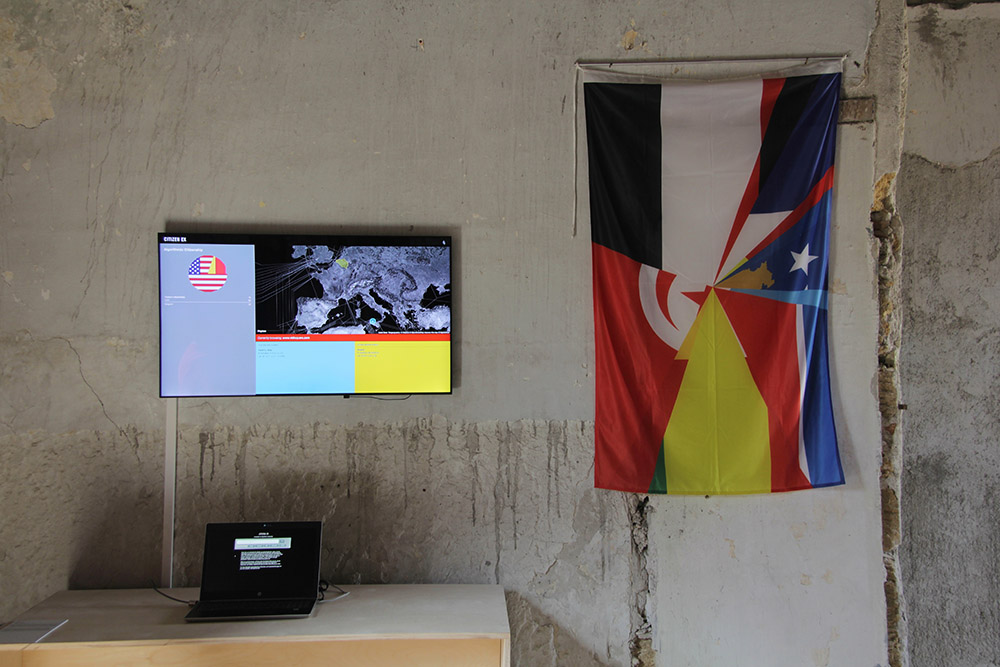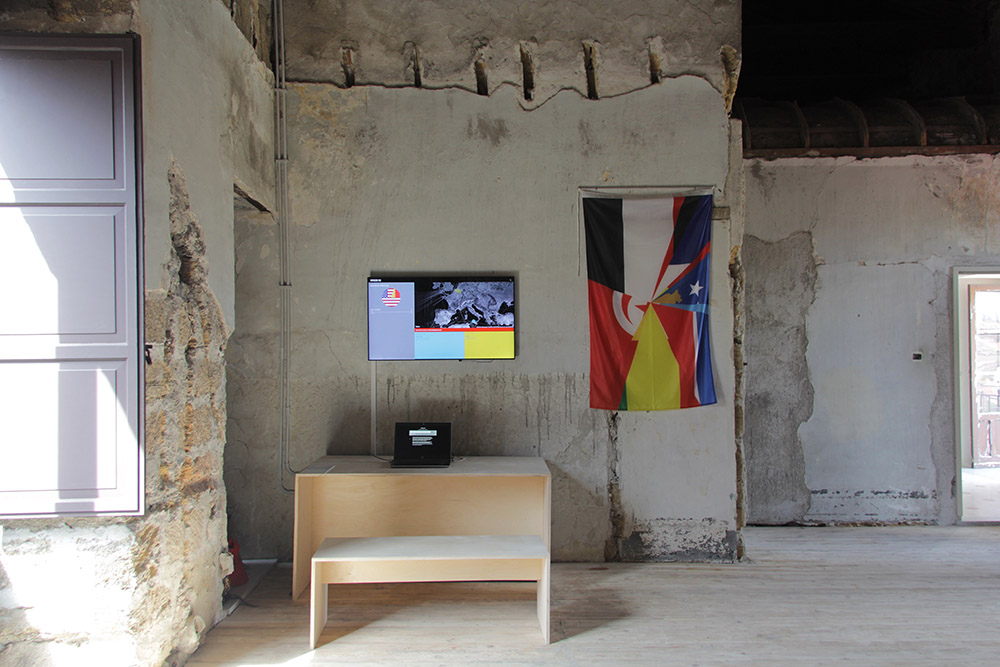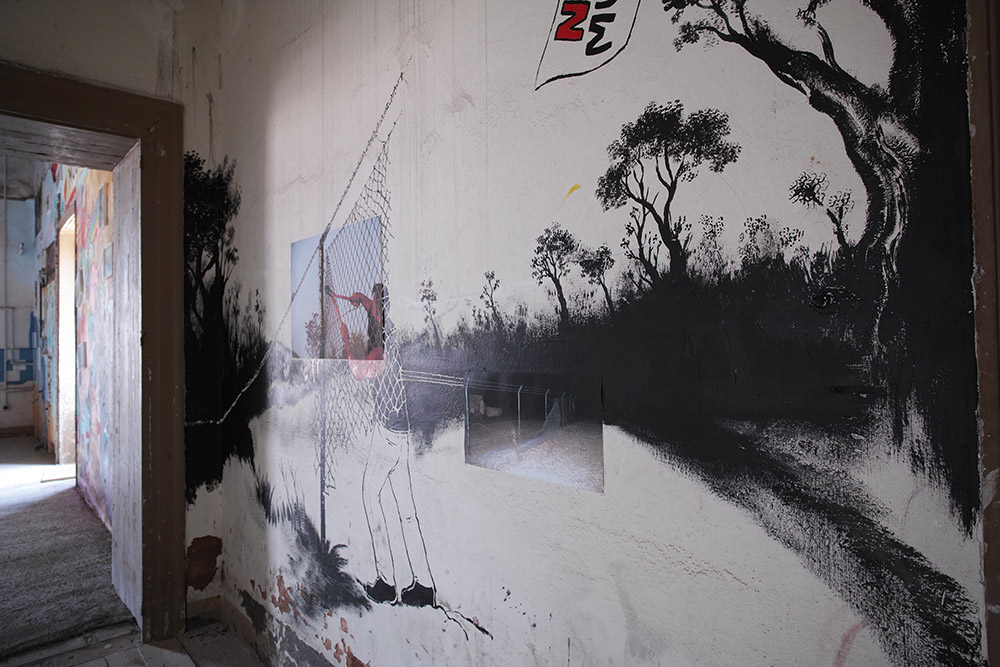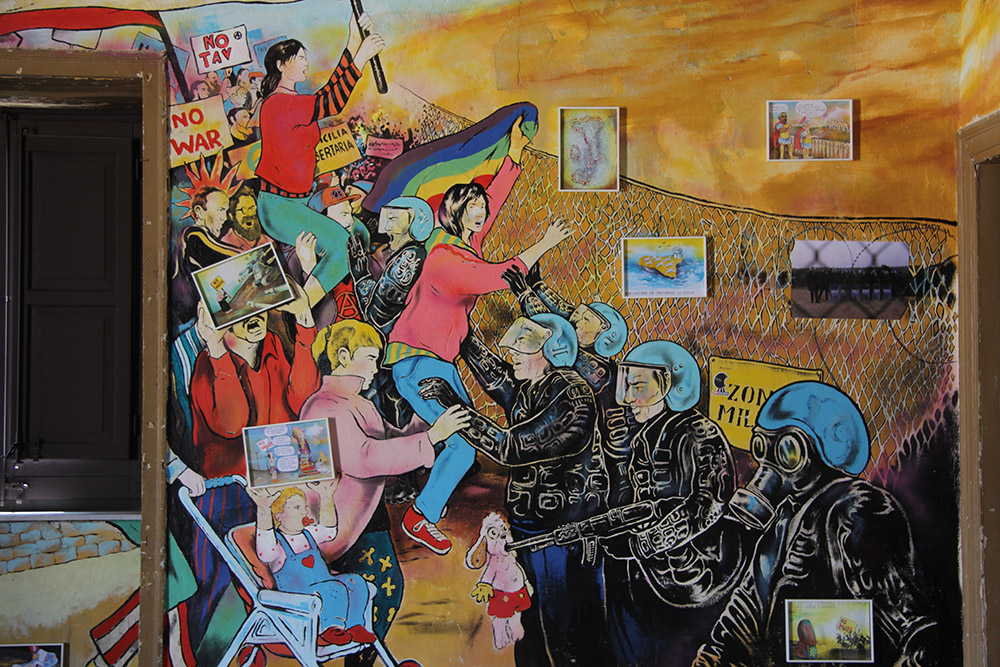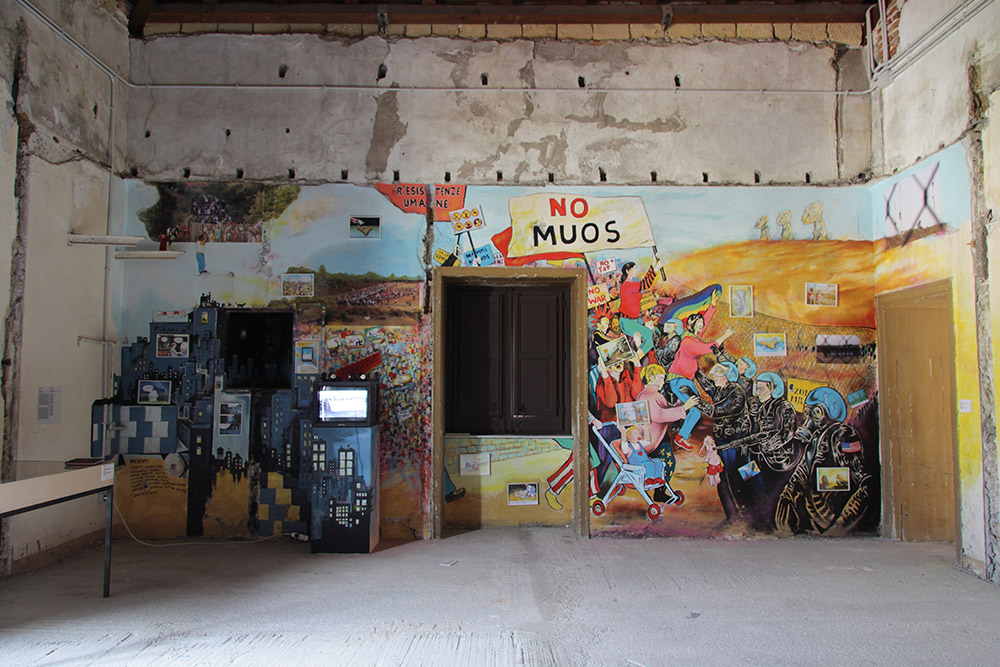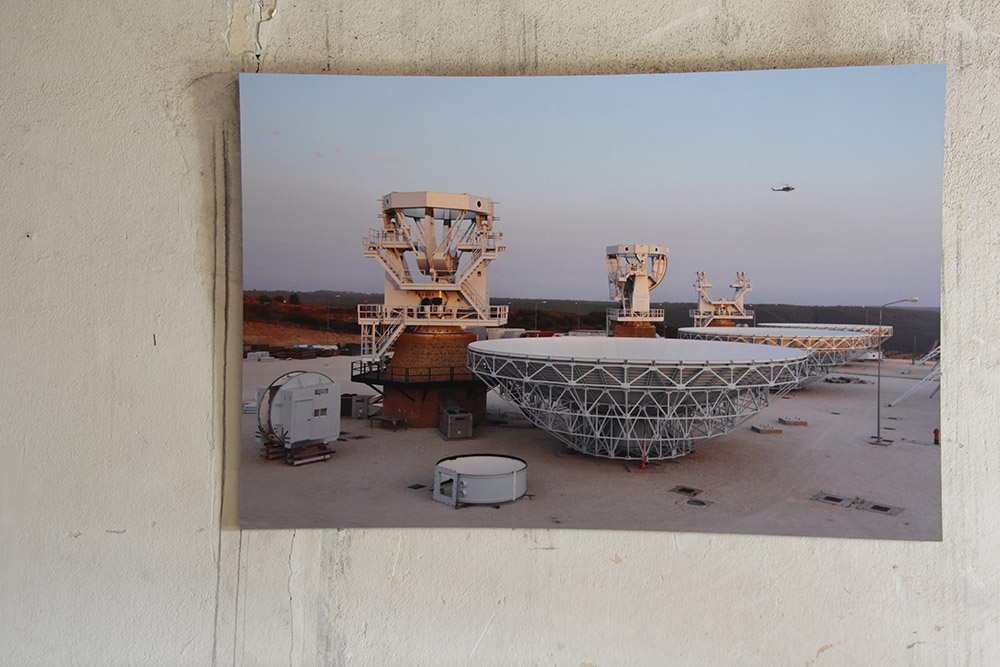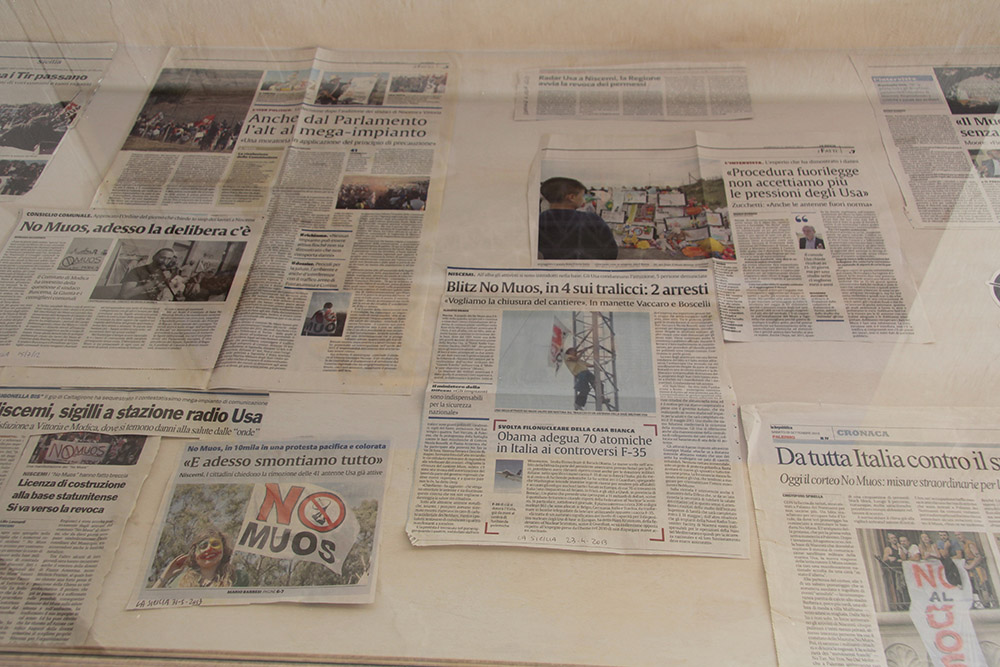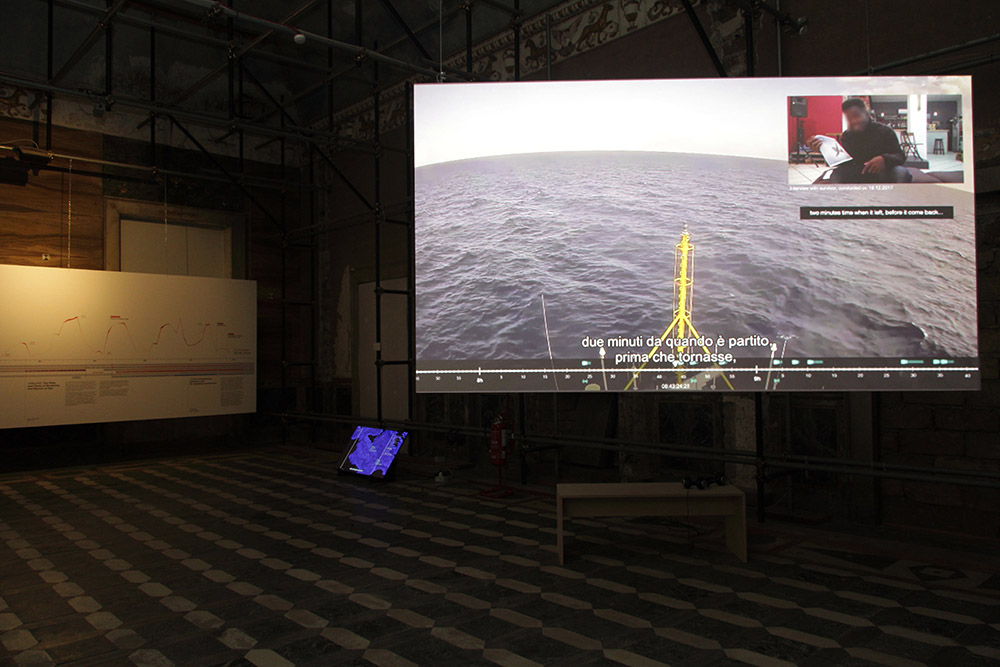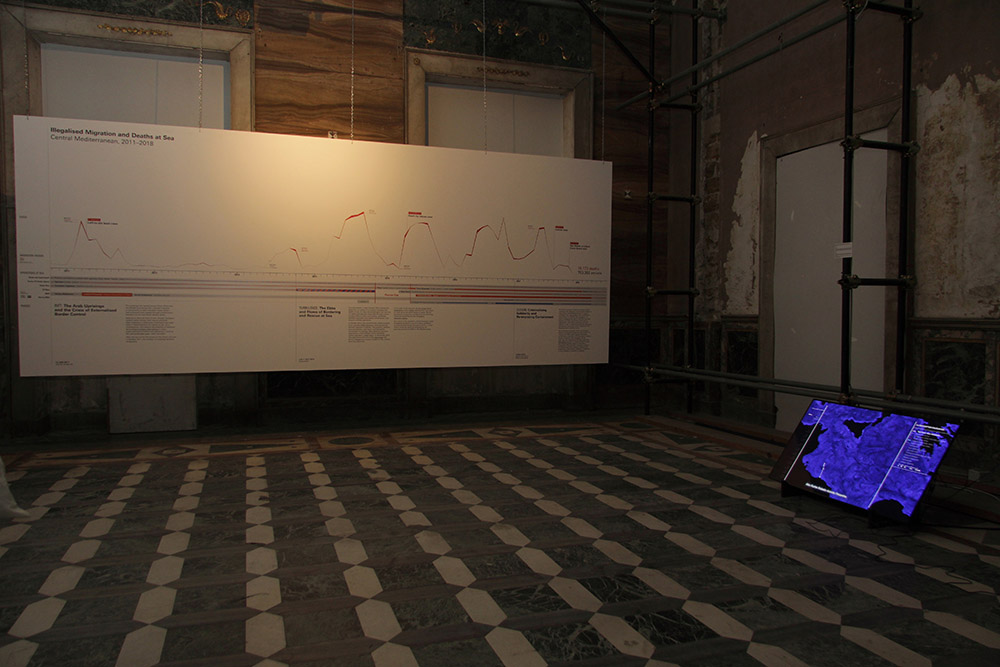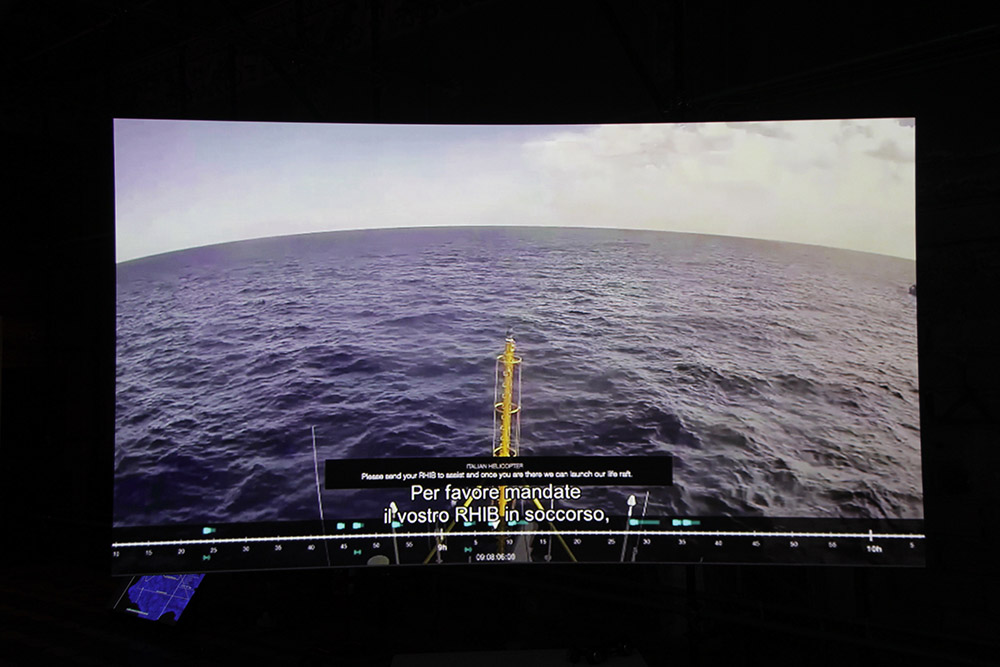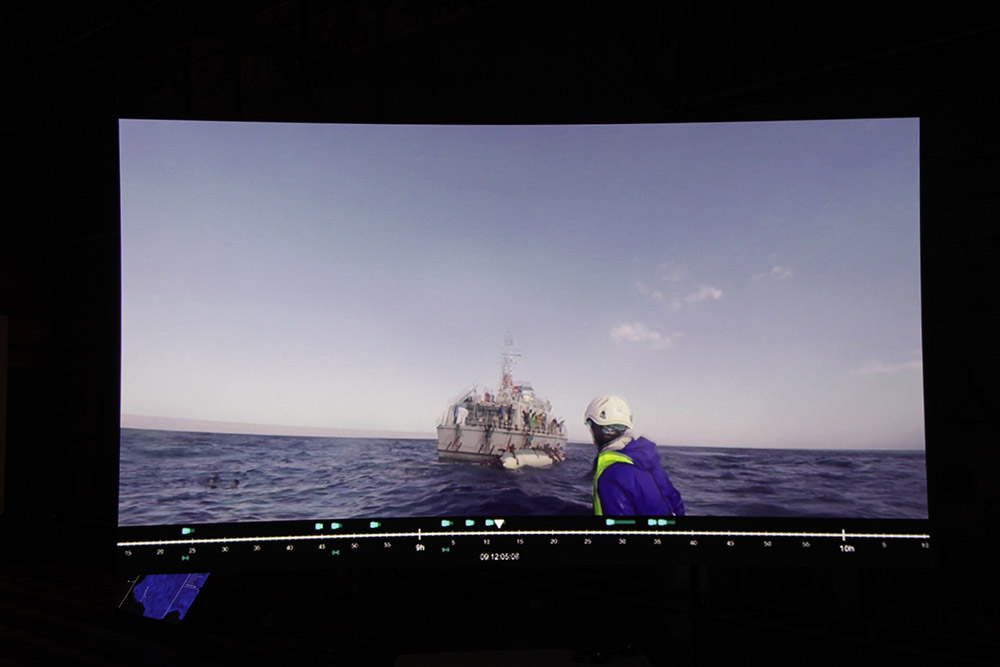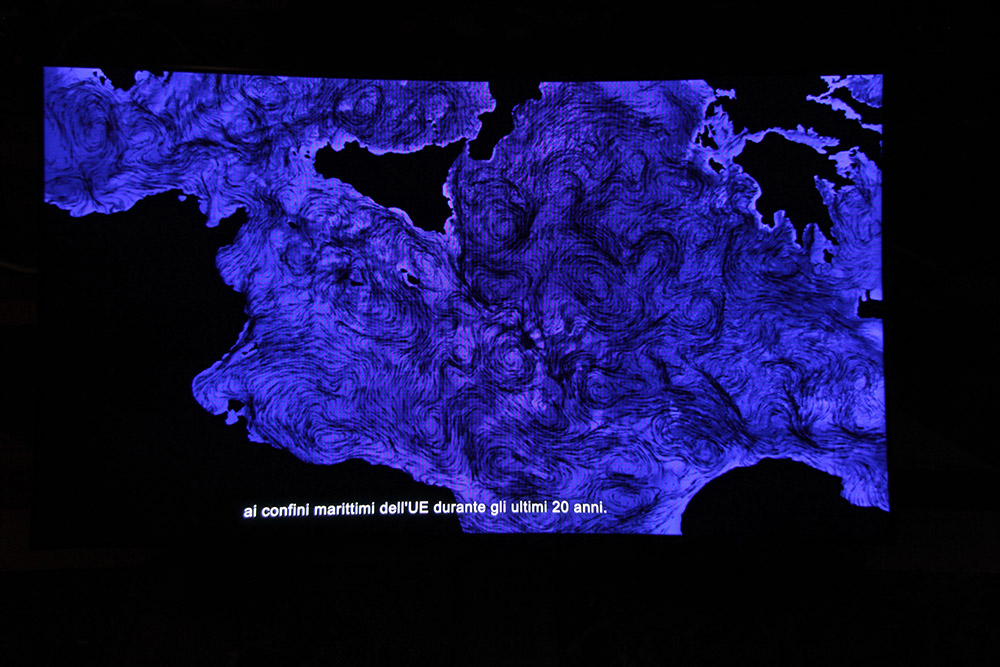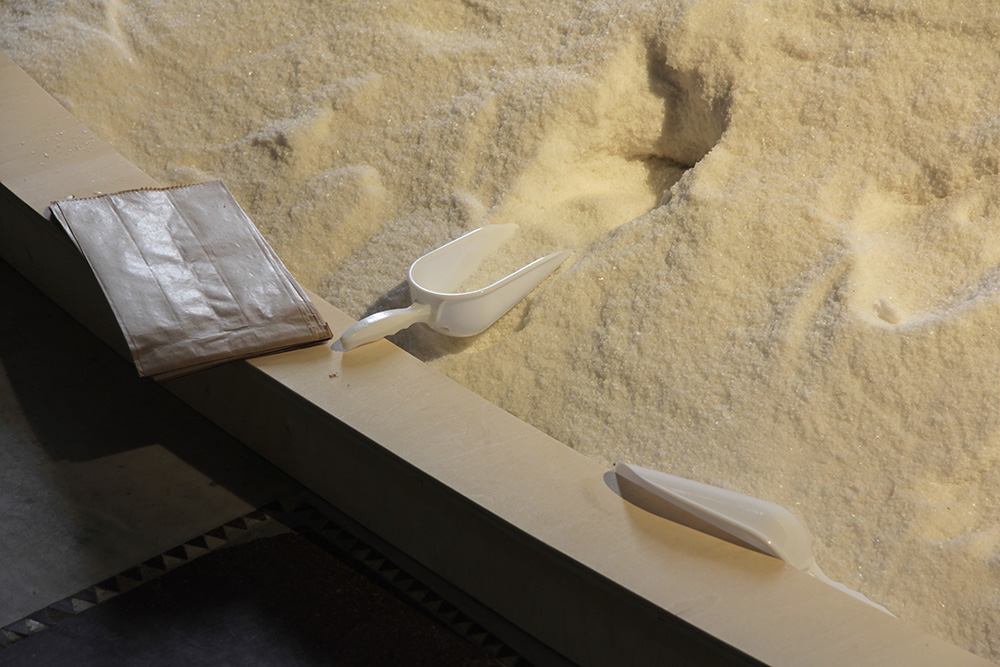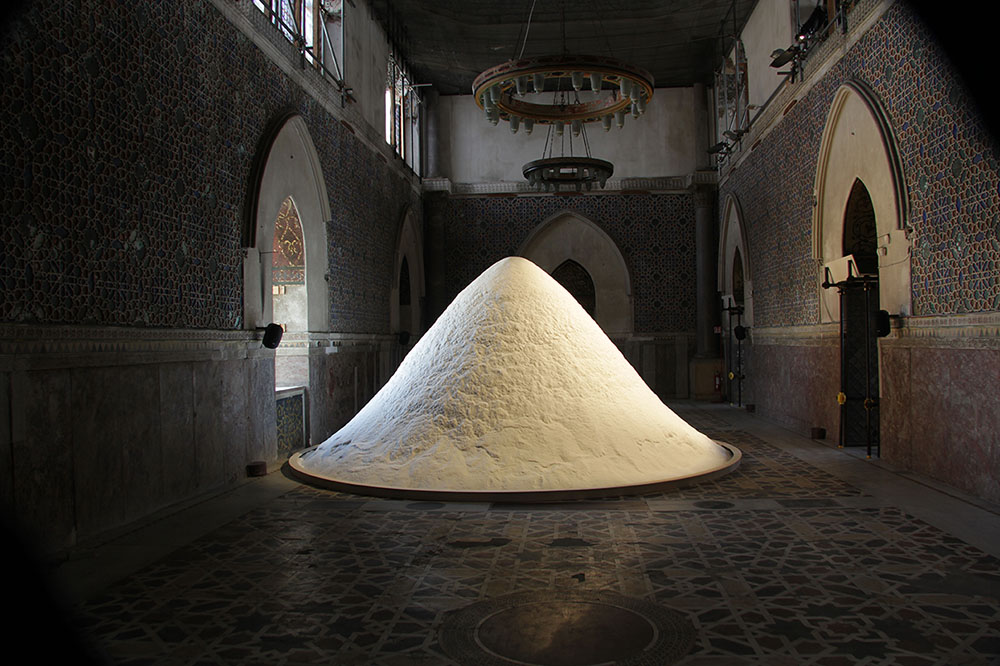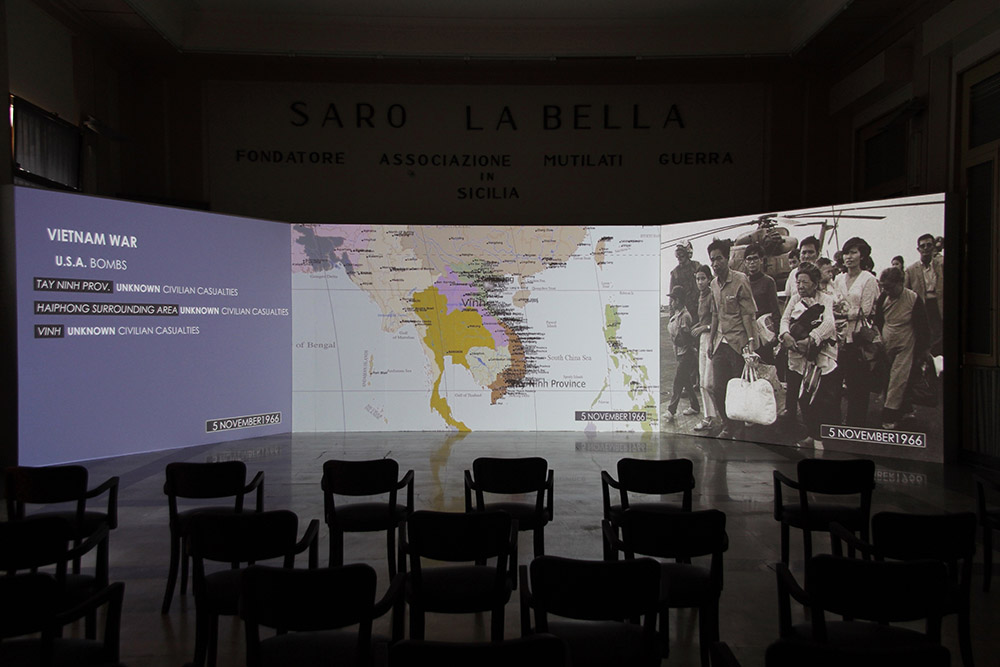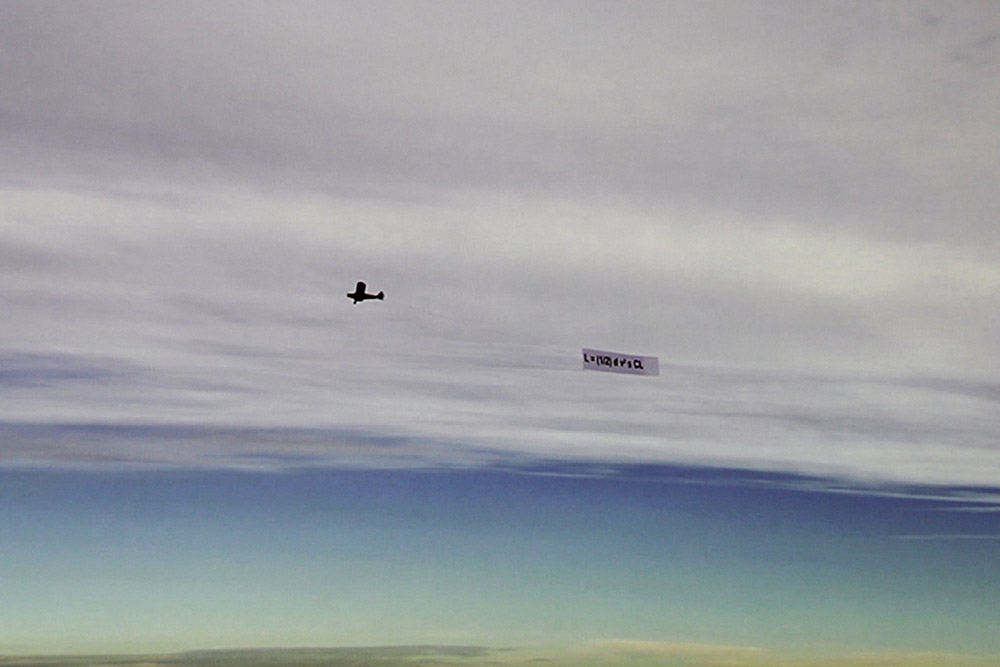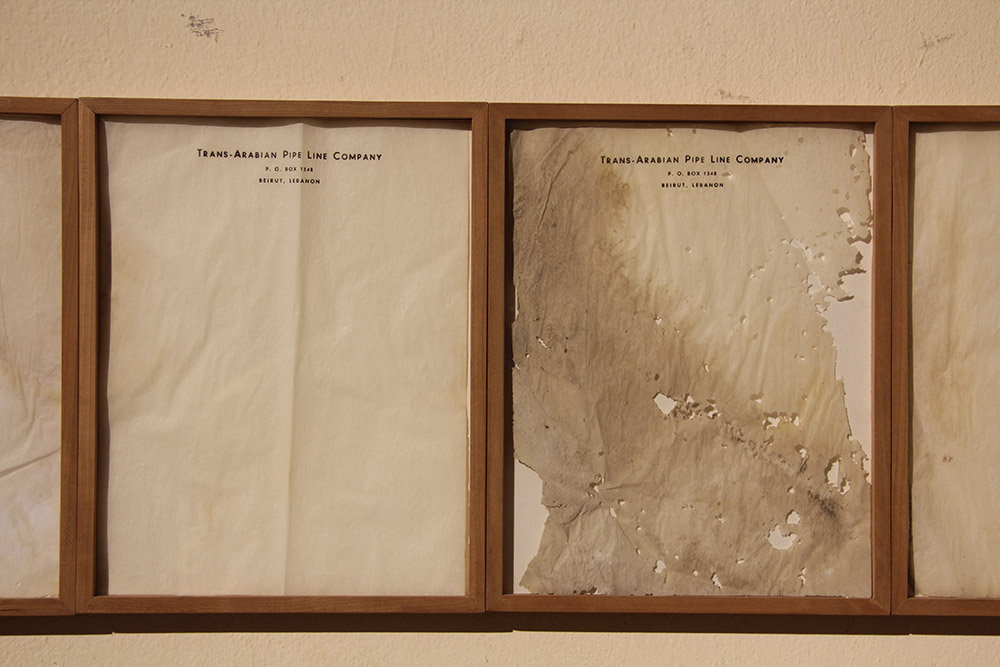BIENNALS: Manifesta 12-Palermo,Out of Control Room,Part II
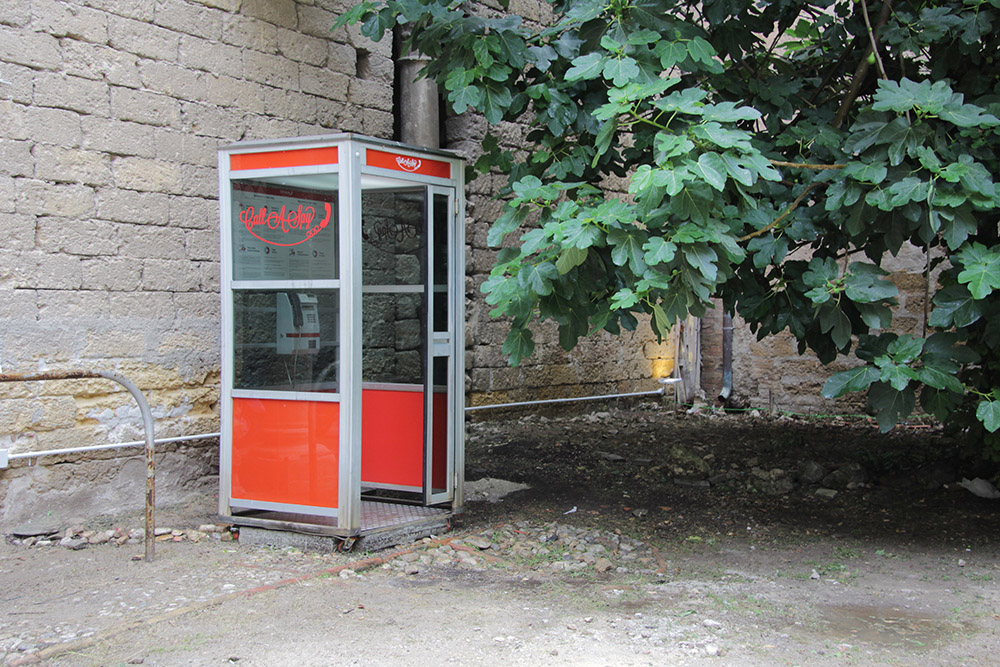 Manifesta 12, the European nomadic biennial, presents the work of 50 artists to the public at 20 different venues in Palermo. A network of events including artistic installations, videos, performances, urban actions, and literary projects constitutes “The Planetary Garden. Cultivating Coexistence” and has three major axes “Garden of Flows”, “Out of Control Room” and “City on Stage”. In this article we will focus on “Out of Control Room” section (Part I).
Manifesta 12, the European nomadic biennial, presents the work of 50 artists to the public at 20 different venues in Palermo. A network of events including artistic installations, videos, performances, urban actions, and literary projects constitutes “The Planetary Garden. Cultivating Coexistence” and has three major axes “Garden of Flows”, “Out of Control Room” and “City on Stage”. In this article we will focus on “Out of Control Room” section (Part I).
By Efi MIchalarou
Photo: Manifesta 12 Archive
The starting point of the curatorial project “The Planetary Garden. Cultivating Coexistence” of the Manifesta 12-Palermo is the cultural syncretism inherent in both the natural world and in the past and present of Palermo. Manifesta 12 takes on the botanical metaphor of the garden designer and philosopher Gilles Clément who sees the world we inhabit as a garden to be tended. The projects included in the Out of Control Room give tangible substance to the invisible networks in the system of digital flows, aiming to make what is abstract accessible and open to debate, with particular reference to how the administration of power has evolved. James Bridl’s in his installation “Citizen Ex”, uses a specially conceived algorithm to show us the path made by the information – both input and output – generated each time we access the Internet. It thus deals with a very relevant topic: the storage and traceability of the data used by individuals, companies, and technologies in different countries and jurisdictions. “Citizen Ex” shows the places where all this takes place and demonstrates how digital actions and virtual architectures redefine geography and so-called Algorithmic Citizenship. Tania Bruguera presents “Article 11”. Not far from Niscemi, a town in south-east Sicily, the United States Navy has activated a new global communications system called MUOS (Mobile User Objective System) which uses a global provider to conduct remote warfare, coordinating and controlling drones and remotely piloted aircraft. In addition to its base in Sicily, the United States has established three other such bases in Hawaii, Australia, and Virginia. The decision to erect three enormous satellite dishes in Niscemi was fiercely contested by the local residents, who have fought against MUOS since 2009 due to the harmful effects of the antennae on their health and environment. The documents chosen by Tania Bruguera from the activists’ files tell the story of an ongoing battle. The project includes audio, video, and photographic documentation, organised in the form of an exhibition with the aim of giving the movement new visibility worldwide. “Across the Border” is a participatory project by Filippo Minelli that investigates the themes of migration and identity in the age of big data. For this work, Minelli has had a series of flags made by performers from all the geographical areas with which Palermo is connected due to migration or the exchange of communications through Internet infrastructures. The flags thus become a tool connecting stories, people, and different places instead of defining nations and their populations. Exhibited on the top floor of Palazzo Ajutamicristo, the installation brings together all the flags collected through this casual network of performers. Lydia Ourahmane’s “The Third Choir” is a sound installation composed of twenty empty Naftal oil barrels exported from Algeria in 2014. Naftal, sold domestically in Algeria is a subsidiary of Sonatrach; which is the 2nd largest distributer of crude oil, petroleum and gas supplying to companies such as BP, Total and Chevron. The objects convey a sense of the politics of immigration, by embodying the bureaucratic process of movement, geographically mimicking the same journey to Europe. They raise questions regarding their significance for social and political structures within Algeria, the coalitions of desire, and unrest that lead to the phenomenon of illegal immigration .After 6 declined proposals for the export, The “Third Choir” became the first artwork to be legally exported from Algeria since the implementation of restrictions on the movement of art in 1962, after Algeria’s liberation from France, which was put in place to protect cultural property. This law was amended by section 75 of the Finance Act 2014 through the process of this work, and through the generous support of the Ministry of Culture. Shown alongside a section of “The Third Choir Archives”, 934 documents involved in the process of exporting 20 empty oil barrels from Algeria to the UK. Trevor Paglen presents his series of prints “It Began as a Military Experiment” a contemporary research in the field of facial recognition techniques began in the mid 1990s by order of the Defense Advanced Research Projects Agency. At the start of that decade, the military authorities established FERET, the database that collected tens of thousands of photographs of people, the majority of which were employed at a military base in Maryland. This work was created by compiling a selection of portraits so as to retouch them and analyse them using an algorithm capable of identifying facial recognition points. The project seeks to reflect on the superstructural qualities of these portraits, produced not for human eyes but for machines. The selection represents some of the “original” faces on which much of later research around facial recognition is based. Rayyane Tabet presents “Steel Rings” and “Letterheads” both works are part of the series “The Shortest Distance Between Two Points”. The Trans-Arabian Pipeline (TAPline) was a bold American business venture: an oil pipeline 1,213 km long that transported oil from Saudi Arabia to Lebanon through Jordan, Syria, and the Golan Heights from 1950 to 1983. The socio-political developments that later affected those areas brought about the dissolution of the company and the pipeline was abandoned. Today, this infrastructure is the only existing thing that physically manages to cross the border of five different political entities in a territory where borders are of great importance. “Steel Rings” is a sculpture that replicates the pipeline through 10-cm segments with the same diameter and thickness of the original pipes, each with an incision indicating its distance from the source and actual geographical coordinates. ”Letterheads”, on the other hand, is a series of framed paper documents found in the abandoned offices of the Trans-Arabian Pipeline headquarters in Beirut. A silent series of sheets laid one beside the other form a timeline describing the rise and fall of this infrastructure. Peng! Collective launched a campaign to promote helping refugees to cross the interior borders of the European Union, for example by suggesting people coming back from a holiday give migrants a lift in their car as far as Germany. Establishing a parallel with the country’s recent history by referring to the Fluchthelfer (agents who help others flee) who risked their lives to help people escape East Germany, the project “Fluchthelfer.in. Become an Escape Agent”, encourages an act of civil disobedience in favour of the refugees, who have been denied the fundamental right of free movement in Europe. Peng! Collective provides information on how to participate in this action while minimising the risk of criminal consequences, and has also begun a crowdfunding campaign to help the contemporary Fluchthelfer sustain the legal costs resulting from their acts of civil disobedience. Richard Vijgen’s data visualization “Connected by Air” proposes a contemporary image of the sky over Palermo, a vector of people, things and information. The artist creates a window with a panoramic view of all the data and objects crossing the sky, including wireless signals, satellites, airplanes, and air conditions and currents. In Palermo, the sky can be seen not only from the street but also in the ceiling frescoes of many of Palermo’s historic palazzi, painted during the Italian Renaissance. Typically, the artists used the sotto in su’ perspective technique and the quadratura genre, a highly realistic perspective that extends the architectural space. With these techniques as inspiration, the artist has created a visualization of data in a sotto in su’ projection of the sky over Palermo. In John Gerrard’s Video simulation “Farm (Council Bluffs, Iowa)” digital networks are perceived as being completely abstract and ephemeral. In fact, however, the constantly increasing flow of data requires enormous repositories to archive and elaborate all that data. These data farms occupy huge surfaces in remote areas of the world, consuming a prodigious amount of energy. Gerrard’s project makes a physical infrastructure of this type visible. The building housing hundreds and hundreds of internet servers was created by Google and processes a massive amount of data from around the world. Along with a team of technicians and modellers, the artist has recreated the data farm building, faithfully displaying its visually and conceptually intricate structure and setting it in a simulated, hyper-realistic world. Through the use of videogame software, the building is transferred from our physical reality to a model in which the video camera moves, revealing and scanning its spaces. Furthermore, the building is situated in an orbit determined by the light of a year, so that day and night proceed according to the yearly cycle.
Info: Organizers: Manifesta Amsterdam and Il Comune di Palermo, Various venues, Palermo, Duration: 16/11-4/6/18, Days & Hours: Tue-Sun 10:00-20:00 With the exception of: Chiesa di Santa Maria dello Spasimo (Tue-Sat 9:30-18:00) and Volpe Astuta (Tue-Sat 10:00-19:00), http://m12.manifesta.org
